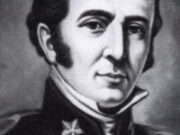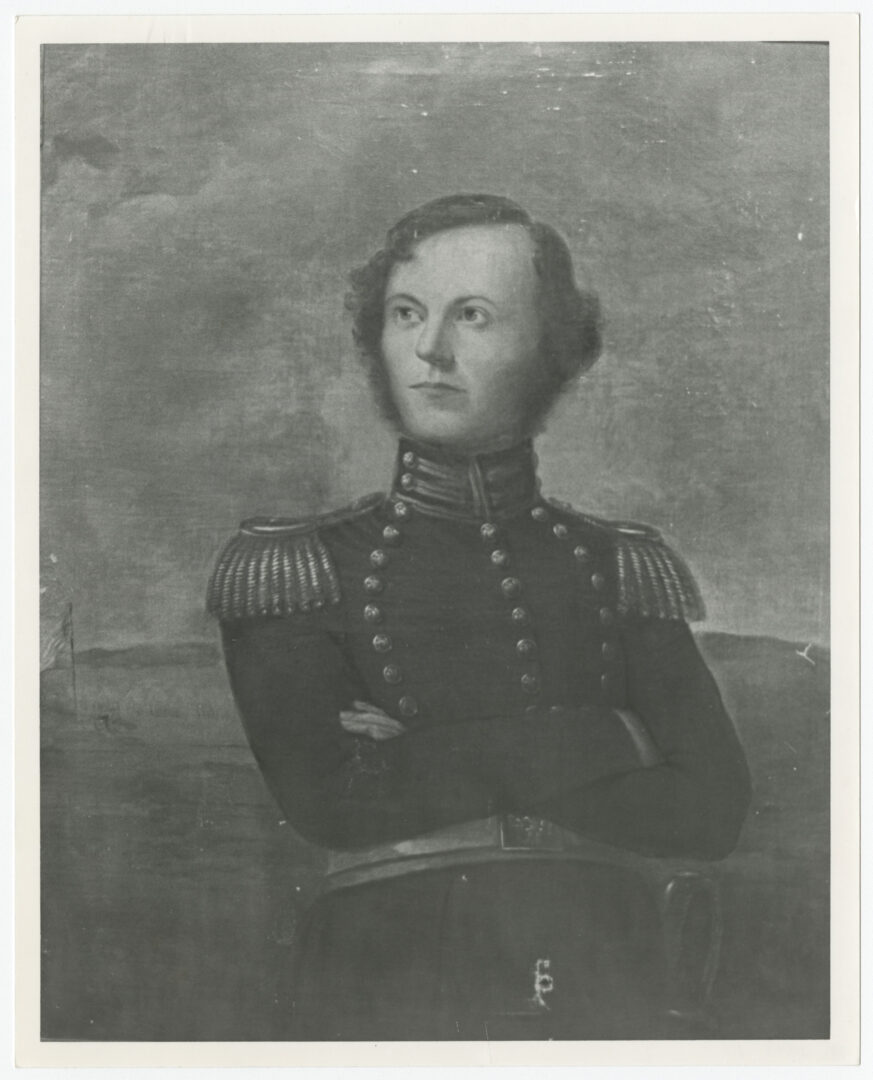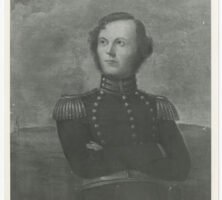Colonel James Walker Fannin Jr. distinguished himself in a number of skirmishes during the Texas Revolution. He is best known for commanding the ill-fated group of Georgia volunteers and Texans massacred at Goliad, Texas, on March 27, 1836.

Born January 1, 1804, Fannin was the illegitimate son of a Morgan County plantation owner, Dr. Isham Fannin. He was adopted by his maternal grandfather, James W. Walker, and reared on a plantation near Marion. One of his cousins was Samuel F. B. Morse, the inventor of the telegraph.
At the age of fourteen, Fannin briefly attended the University of Georgia, but in 1819, as James F. Walker, he entered the U.S. Military Academy at West Point in New York. He was not very studious; academically he stood sixtieth in a class of eighty-six. He resigned in November 1821 after dueling with a fellow cadet. Fannin returned to Georgia, where he became a merchant and married Minerva Fort, with whom he had two daughters.
Fannin resided in Twiggs and Troup counties successively, and in 1828 he moved to Columbus. There he was a master of the local Masonic lodge and pursued a judgeship but was disqualified for dueling. While in Columbus he also served as secretary of a temperance society and was division inspector for the Georgia militia. In the autumn of 1834, Fannin and his family moved to Velasco, Texas, where he became a planter and managing partner in a slave-trading syndicate.
In August 1835 Fannin was appointed by the Committee of Public Safety and Correspondence, an assembly of prominent Texans seeking independence from Mexico, to solicit funds and supplies from sympathizers in Georgia. He was also tasked with recruiting former colleagues at West Point to join him in Texas and lead volunteer and regular armies. As a member of the Texas volunteer army, Captain Fannin fought alongside the Brazos Guards in the first battle of the revolution against Mexico, held at Gonzales on October 2, 1835. On October 28, he led Texas forces in the Battle of Concepcion. On December 7, he was commissioned a colonel in the Texas regular army.
Fannin’s appeal for aid drew strong attention. In Macon about thirty men stepped forward to assist “our fellow countrymen of Texas,” and more than $3,000 was raised to defray the cost of the trip to Texas. On November 18 the Macon volunteers left for Texas, traveling by way of Columbus, where another group of volunteers joined them. Fannin welcomed the Georgia Battalion to Texas on December 20, 1835. He was later elected to command a regiment consisting of the Georgia Battalion and the Lafayette Battalion (composed of men from Alabama, Kentucky, Louisiana, and Tennessee). By February 12, 1836, Fannin had marched his regiment to Goliad, an old Spanish fort on the southwest bank of the San Antonio River about thirty miles from where it empties into the Gulf of Mexico.
On March 14, 1836, Fannin was ordered by Texas president Sam Houston to withdraw to Victoria, but he delayed until the 19th. As Fannin’s regiment withdrew, it was surrounded by a Mexican force under General Jose de Urrea. Fannin unsuccessfully engaged the Mexican army at the Battle of Coleto Creek and was forced to surrender his entire command. Wounded, Fannin capitulated on the condition that his men be well treated because they had given up their arms peacefully. The agreement was countermanded by General Antonio Lopez de Santa Anna, and on Palm Sunday, March 27, 1836, more than 330 Georgians, Texans, and others imprisoned at Goliad were marched out into the woods and shot. While some prisoners escaped the massacre, Fannin was kept inside the fort. He was taken to the courtyard, where he was blindfolded, seated, and shot through the head. His body was burned. According to some accounts, Fannin’s watch was later discovered in the possession of a Mexican officer during the Battle of San Jacinto on April 21, 1836. The reputed artifact is currently held in the collection of the Dallas Historical Society.
In 1854 Fannin County in north Georgia was named in his honor.






